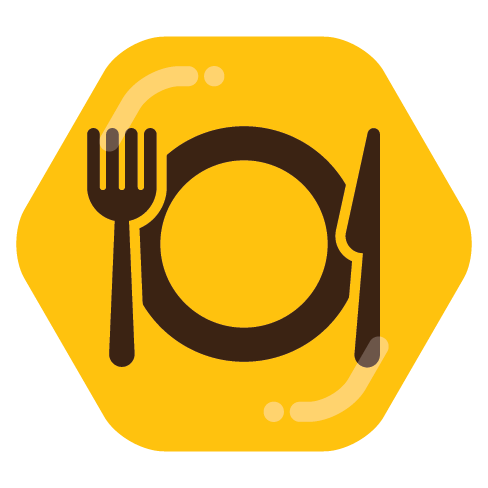

For almost any phone: just turn it off. Every phone I’ve used requires a passcode after a power cycle


For almost any phone: just turn it off. Every phone I’ve used requires a passcode after a power cycle


My work phone is an iPhone and I love this feature. The moment it’s past work hours I no longer get buzzed for any notifications, and I only see direct messages on the home screen


I have a galaxy s21 that I’ve been using for the last 3 years. I haven’t noticed any difference in performance from the day I got the phone, and I don’t feel I’ll need to upgrade for another couple years. Full disclosure, I did use adb to remove a ton of Samsung bloat when I got the phone, and that definitely improved performance, so I’m not sure how different my experience would be with all the extra Samsung stuff added.


Probably because I rambled for way too long and didn’t give sources lol, here’s a couple examples from America’s test kitchen demonstrating what I mean:
Review of a combo Dutch oven/slow cooker that’s not great at either job, and is more expensive than buying the two items separately https://youtu.be/llPyDvfHx3k
Gear roundup for 2023, the best things were ones that innovated in materials or tech that was actually useful, worst things were overcomplicated equipment that didn’t actually try to use tech to improve the mechanics of the cooking equipment https://youtu.be/AU3mUjIF3A8


Cooking is an inherently manual task, and as such any meaningful improvements to cooking tools are enhancements to the manual capabilities of the tools. These are improvements to things like speed/precision/durability of mixing, heating, weighing, etc. Often times the most meaningful improvements are improvements in mechanisms in cooking machines or the materials they are made of, but there are definitely examples of electronics or software contributing in this way. Good examples would be fuzzy logic applied to electric kettles to make the act of heating to a specific temperature more precise by controlling the heating element so the water is brought to temperature without overshoot, or PID controllers in espresso machines controlling pumps to follow a specific pressure curve instead of requiring complex mechanical systems to accomplish the same thing. The problem with many of these internet-connected or heavily software-dependent appliances is that their added features do not improve the manual capabilities of the appliance in any way, sure the machine will tell you how much weight of flour you need for your cake, but your cake won’t be better than one produced by a “dumb” machine because the scale isn’t any more precise than any other scale that would be used for that purpose.
The other issue with these devices is a fallacy that’s really common in kitchen equipment, which is the idea that more functions = better. Fundamentally, a device designed to do both task A and task B will be worse than an equivalently priced combination of one device for task A and one device for task B, because there is a cost associated with engineering the device to accomplish both tasks. This effect is especially noticable on all-in-one devices that mix, weigh, and heat because there’s a lot more complexity, and thus a lot more cost spent on integrating the components together


How to destroy your up-and-coming indie studio in three simple steps!
Publicly fuck over the two people most responsible for your massively successful IP, ensuring they’ll never work with you again
Cancel any follow-up to your massively successful IP and continue with projects nobody cares about
Fire the rest of the staff responsible for your only successful IP


There is a well known fault in Teslas where the front linkage breaks, and that’s a lot more catastrophic than just putting on hazards and pulling to the side of the road. Worse still, this can happen at less than 100 miles driven, and Tesla won’t cover it under warranty: https://www.cnbc.com/2023/12/20/tesla-blamed-drivers-for-failures-of-parts-it-long-knew-were-defective.html


Join the cult of embedded engineers! My current project at work uses a cortex m0, so we have 32kB of code ROM and 4kB of RAM. It’s really satisfying finding little optimizations to save a couple dozen bytes here or there, and there’s never the pressure to just slap together code without worrying about size or speed since you can’t afford it with the hardware you’re using


Not sure if it automatically changes Facebook links, but the Facebook container extension is good at removing other tracking that Facebook does through news sites and such


Ooh, would be an interesting concept to have a folding phone with a physical keyboard+smaller screen for the outer display, as opposed to making the outer screen a normally-sized phone screen


I mean, it’s pretty scummy but “working with” could refer to just being in communications with those charities about what a potential donation would be used for. Given what Jirard has said, I assume he was completely negligent about checking in on any of the foundation’s activities, and was probably just handed a paper with the names of “partners” on it for the stream. That said, I feel like the quotes about being a “major” or “main” partner with some specific organizations could get them into trouble, even if it’s legal for them to hold the money that long and they pass IRS audits


I would love to see an actual lawyer’s take on this. Jirard’s response is basically “we mislead everyone and were shitty for not donating before now, but it was perfectly legal for us to hold the money until now, and it was also legal for us to use donations for operating expenses of the foundation/events”. While Karl presents a lot of evidence of misleading statements by Jirard, his usage of the encyclopedia brittanica to define charity fraud instead of any actual legal definition, and presentation of evidence as more damning than it actually is (and in a very hostile manner) leads me to view both sides in a negative light. At this point, I have no idea whether either side has any legal grounds for the accusations made toward the other, and I don’t see that changing unless someone with actual legal knowledge weighs in


This research is apparently showing different damage than what was thought from previous experiments. The previous theories would suggest minor hearing loss, but these researchers found many cases where affected people performed normally on hearing tests, indicating hidden nerve damage and a different mechanism causing the phantom sound


Yeah, very likely a mix of tones. For me it’s primarily 13.9kHz, but occasionally a much lower tone in just my right ear


The university replaced the rocks with trees? Paint the trees instead!


True, but people who used to be served one ad per video are now being served 4 or 5, which both lessens the value of each individual ad, and gives more incentive to get rid of them with premium


America’s Test Kitchen does very thorough reviews of lots of kitchen equipment, here’s their review of induction cook tops.
TLDW: duxtop 1800W is good, there are better ones but they’re a lot more expensive


I think the major difference that determines copywrightability is the amount of control the artist has on the outcome. If a photographer doesn’t like the composition of a photo, there’s a variety of things they can do to directly impact the photo (camera positioning/settings, moving the subjects, changing lighting, etc.), before it’s even captured by the camera. If someone is generating a picture with AI and they don’t like the composition of the image, there’s nothing they can do directly impact what the output will be.
If you want a picture of an apple, where the apple is placed precisely at a certain spot in frame, a photographer can easily accomplish this, but someone using AI will have to generate the image over and over, hoping that the algorithm decides to eventually place the apple exactly in the desired spot


It’s so blatant how gen ed classes are used to get every last cent out of students. Like, I understand the reasoning that some students lack general skills they’ll need for their jobs (e.g. engineering students having terrible English skills, which will be needed for presentations/reports), but that’s not an excuse to require every student to take those classes no matter what. If they really only cared that students were proficient in those subjects, there would be the option to test out, but that’s never a possibility. Most big universities near me also refuse to give credit for AP/IB classes, and don’t even allow credits to transfer from other colleges for everything but the most base-level courses.
I can think of about one class per semester (so almost a quarter of my classes) that was pure filler, where I only showed up for tests/presentations, and that I could have tested out of with maybe a week of effort, but that wasn’t allowed. In one case, I managed to skip the first semester of a subject and take the second course because they forgot to list the first one as a prerequisite. The scheduling counselor found out after I had already passed the more advanced course and was pissed. They made me take a replacement course even though I was 30 credits over the graduation requirement and had clearly already filled the knowledge requirement for that subject. You get one guess as to why that was 🤔
Sorry, I misread your comment, I thought you were asking for a method other than one using lockdown mode. I doubt there’s a method using location if it isn’t provided by the manufacturer, because an app trying to do that would need permissions to lock the phone.